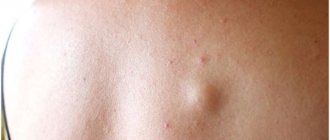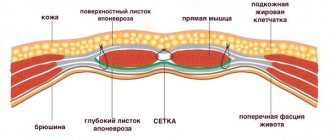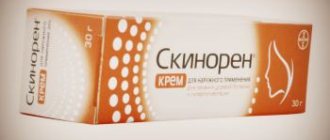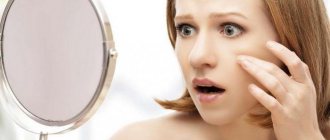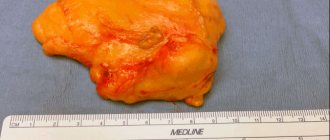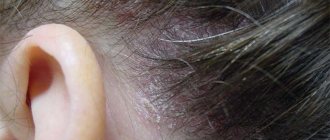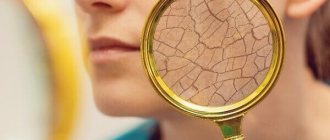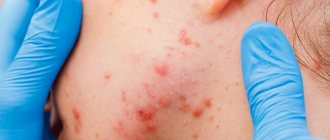If you are concerned about facial asymmetry:
- Don't rush to see a surgeon!
Any surgical intervention is a risk. Especially if the operation does not eliminate the cause of the problem.
- Don't rely only on cosmetics!
You can paint and repaint a damaged car as much as you like. But that won’t stop her from being beaten. It's the same with the face...
Treatment at the Orto-Artel clinic without surgery!
We will help you understand the correction of facial asymmetry. And we will decide “wisely”, based on the reason.
Problems of facial aesthetics are of more and more concern to our patients. “How to correct facial asymmetry?”, “How to correct an asymmetrical face?” or “If the face is not symmetrical, what should I do?” We hear such questions very often. But how is this usually solved in other clinics? Cosmetologists, plastic surgeons. And all of them are in demand and promise good results. But is turning to a surgeon always justified? And can a cosmetologist always help? And most importantly, is there an alternative to surgery and all these “Botox”, “golden threads” and other “medicines” for the face? Indeed, very often, in pursuit of aesthetics, wanting to get results here and now, patients forget about the main thing - health.
Treatment in installments
The Orto-Artel clinic offers installments for the entire process of treating any disease. Personal conditions are considered on an individual basis.
Find out more
or call 8 (495) 128-11-74
One of the most common problems is various types of facial deformities. The range of such asymmetries, as well as complaints and tasks that patients set for themselves in order to achieve a harmonious face, is very diverse. Some people don't like the fact that the right and left halves of the face are not the same. Someone is concerned about different eye sizes (see “Deformation of the cranial bones”). Someone has an asymmetrical jaw: the lower jaw moves to the side when opening the mouth, or the center of the upper jaw (the line between the central upper incisors) is shifted to one side (see “Crossbite”). And some people have ears at different levels and protruded differently. Someone’s jaw protrudes (see “Mesial bite”) or, conversely, “sinks” (see “Distal occlusion”). And someone has an asymmetrical chin.
In general, our patients have a great many complaints and complaints. But, despite this variety of expression and manifestations of facial asymmetries, these problems are corrected, as a rule, for some reason very superficially: either cosmetologists “inject”, “pump” or “rub” something, or surgeons do plastic surgery, something cutting or enlarging.
But it should, however, be understood that an asymmetrical face is not a diagnosis. This is just a symptom of a problem. A symptom, in medical terms. But treating symptoms is a thankless task. It is much more important to find the cause of the problem and eliminate it.
Diagnostics is the first and key step in the treatment of facial asymmetry. Do you want to know why it’s impossible to do without diagnostics?
Symptoms of facial asymmetry
The severity of facial asymmetry and the reasons that led to the appearance of defects are the two main factors on which the clinical picture of the pathology depends. Minor violations that occur due to age-related changes are considered to be only an aesthetic problem. Gross disproportion of the facial part of the body is usually observed after severe injuries or serious illnesses. Symptoms of changes on the side of the injury are easy to notice externally:
- facial muscles are not involved in movements;
- the corner of the mouth drops;
- articulation is impaired;
- natural folds on the forehead and in the area of the nasolabial triangle are smoothed out;
- the patient cannot completely close one eye;
- while eating, the work of the lacrimal glands increases;
- there is no facial expression on one side of the face.
Treatment
The etiology of facial asymmetry is very diverse. Many diseases accompanied by this symptom can pose a serious threat to the patient’s health, especially if treatment is started late. Self-medication in such cases is unacceptable; the appearance of this symptom should be considered as a reason to immediately seek medical help.
Conservative therapy
The treatment plan varies depending on the characteristics of the pathology. In many cases, a special diet is recommended. For dental diseases, treatment of caries, pulpitis, and periodontitis can be carried out. Patients with facial asymmetry are prescribed medications of the following groups:
- Analgesics
. Indicated for severe pain syndrome. Intramuscular injections or tablet forms are possible. - NSAIDs
. Required to reduce the severity of inflammation, swelling, and pain. General action drugs are taken in short courses to reduce the risk of side effects from the liver and gastrointestinal tract. - Antibiotics
. Necessary for general bacterial infections and local inflammatory processes. First, broad-spectrum drugs are used; after receiving the results of microbiological analysis, the antibiotic treatment regimen is adjusted taking into account the sensitivity of the pathogen. - Antiseptics
. Local medications are used in the form of rinses. Recommended in the presence of inflammation, wounds on the mucous membrane, after surgery.
In some cases, drug therapy is supplemented with physical therapy. When treating diseases that cause facial asymmetry, electrical stimulation, UHF, medicinal electrophoresis, and other methods may be prescribed. For oncological pathologies, chemotherapy and radiation therapy are performed.
Stages of development of facial asymmetry
- First stage. The functionality of the facial nerve is preserved, no significant changes are observed.
- Second. A slight curvature appears when a person closes their eyes or smiles. The patient has weakness of the facial muscle tissues.
- Third. Signs of asymmetry are more pronounced, difficulties appear in raising the eyebrows, muscle mobility is partially limited, and there may be spasms.
- Fourth. The face becomes asymmetrical even at rest, the eye does not cover completely, and the position of the mouth is disturbed.
- Fifth. The main sign is the absence of contracture; movements of the injured side are imperceptible.
- Sixth. Muscle tone decreases, the patient complains of the inability to move the muscles of the affected part of the face.
If any signs indicating a violation of the symmetry of the front sides appear, it is recommended to consult a specialist.
Reasons for the formation of anomalies in children
Often, an orthopedic doctor immediately after birth notes asymmetry of the skull in newborns. It is determined by the factors of the child’s development in the womb and the conditions of birth (the position of the fetus in the uterus, its passage through the birth canal).
Usually after 2-3 days the newborn’s skull takes the correct shape. If this does not happen, a thorough examination of the baby is necessary to identify the causes of the deformities.
In addition to the birth anomaly, most children under one year of age have facial disproportion due to infants being in one position for a long time.
Birth and infant asymmetry are natural types, and in most cases do not require medical intervention, except perhaps massage.
The pathological anomaly is more often observed in preschool children. It can be congenital or acquired, right-sided or left-sided.
Congenital asymmetry is a consequence of genetic factors and abnormalities in fetal development caused by the condition of the mother and embryo during pregnancy (intrauterine infections, abnormal position of the fetus, asphyxia, lack of nutrients, etc.).
These factors lead to disruption of the formation of soft tissues, cartilage and bones of the skull, uneven healing of sutures, etc.
The specific, most common congenital causes include the following:
- Hypertonicity of the masticatory muscles.
- Muscular dystonia (involuntary muscle contractions leading to impaired development of the TMJ and, often, crossbite).
- Crossbite (due to muscular dystonia or accelerated/slow development of one of the jaws).
- Cleft lip. An anomaly manifested by the presence of 1 or 2 clefts in the upper lip, leading to disruption of the shape of the nose and a depression in the middle area of the face.
- Stigmas of embryogenesis. Various etiological malformations of the fetus. They disrupt the symmetry of the dentofacial apparatus, nose, and skull.
- In addition to pathological factors associated with pathologies of the dentofacial apparatus, there are many other congenital diseases that lead to disruption of facial symmetry.
- These are torticollis, Sturge-Weber syndrome, craniofacial microsomia, etc. The dentist’s task is to differentiate them from pathologies of the dentofacial apparatus, and refer the patient to a doctor of appropriate specialization.
Acquired jaw asymmetry develops in the postnatal period under the influence of various external and internal factors:
- Malocclusion. The most common cause is crossbite, which develops due to bad habits and incorrect positioning of the child in the crib, stroller and at the table. A crossbite can result from slower or faster development of the upper or lower jaw.
- TMJ pathologies.
- Odontogenic and non-odontogenic tumors in the jaws (hard and soft odontoma, osteoma, salivary stones, etc.)
- Impacted teeth.
- Injuries to bone (fracture of jaw bones, skull and face) or muscle tissue.
- Birth injury.
- Periostitis.
- Periodontal inflammation.
Among the non-dental acquired disorders that can lead to an anomaly, the following should be mentioned: diseases of the ENT organs, eye pathologies, curvature of the spine, paresis of the facial nerve, stones in the salivary glands, tumors in the nasal cavity and paranasal sinuses.
Prices
| General: | |
| Initial consultation with a dental specialist (30 min.) | 2,300 rub. |
| Extended consultation with a dentist, head of Orto-Arteli | 6,000 rub. |
| Consultation with a dentist with a description of the CT scan, drawing up a preliminary examination and treatment plan | 5,000 rub. |
| Spot X-ray | 650 rub. |
| Diagnostics: | |
| Primary diagnosis (two visits) First visit: taking impressions, making plaster models, photos. Analysis of jaw models, multisystem analysis of lateral TRG, OPTG analysis, photometry, diagnosis, development of a treatment plan. Second visit: announcing the results to the patient and discussing the treatment plan with him | from 30,000 rub. |
| Additional diagnostics | from 40,000 rub. |
| Diagnostics in the articulator | from 8,000 rub. |
| Computer cephalometry with axiography | 25,000 rub. |
| TENS | 8,000 rub. |
| Analysis of TRG in direct (frontal) projection | 5,000 rub. |
| TRG analysis in the genioparietal (SMV) projection | 5,000 rub. |
| Postural diagnostics Read more about diagnostics in our clinic | |
Provoking factors in adults
The cause of the anomaly in adults is acute and chronic diseases of the dentofacial apparatus and its injuries:
- Congenital pathologies of the dentofacial apparatus that were not corrected in childhood.
- Arthrosis of the TMJ (dystrophic destructive changes in the joints). They manifest themselves as a displacement of the LF towards the diseased joint, stiffness in the morning, and pain.
- TMJ ankylosis (joint immobility due to cartilage degeneration). The anomaly is noticeable at rest and increases when the mouth is opened, which in case of severe pathology does not exceed 1 cm.
The line drawn between the lower central incisors shifts towards the damaged joint. Movement of the jaw in the horizontal direction becomes impossible. - Contracture (restriction of movement) of the LF muscles. The midline is shifted towards the affected muscle.
- Odontogenic benign tumors (odontoma, ameloblastoma, steoma, osteoblastoclastoma). The jaw bones are destroyed by neoplasms, deformation occurs, which usually becomes the first manifestation of the disease.
- Malignant tumors of the upper and lower jaw (sarcomas, carcinomas). The resulting deformation is caused by tumor growth.
- Jaw defects (reduction in the volume of dental tissue) due to osteomyelitis, syphilis, tuberculosis, surgical interventions for oncological diseases. Bone deficiency causes receding of the cheeks and disruption of the oval in the lower jaw area. As the mouth opens, the asymmetry increases.
- Micrognathia – due to underdevelopment of the jaw or damage. Micrognathia HF manifests itself as a reverse overlap, LF - with a slanted chin.
- Diseases of the salivary glands.
- Periostitis. Asymmetry is caused by swelling and/or abscess under the periosteum.
- Periapical (at the root of the tooth) and periaxillary abscess. Facial deformation is caused by swelling that has spread to adjacent tissues. The pathology manifests itself as throbbing pain.
- Crossbite (transversal displacement of the jaws relative to each other). The chin appears to the side, the lip sinks on one side.
- Facial injuries, fracture of the lower or upper jaw. Temporary asymmetry occurs due to soft tissue swelling and/or displacement of the jaw bones.
In addition to the above pathologies, the anomaly can be caused by many other diseases that are not related to the dentofacial apparatus:
- Damage to the brain and meninges (meningitis, encephalitis, stroke).
- Nerve diseases (Bogorad syndrome, facial nerve damage).
- Pathologies of the salivary glands (mucocele, purulent parotitis, adenoma).
- ENT diseases leading to unilateral deformation (sinus cyst, atelectasis (collapse of the paranasal sinus)).
Facial asymmetry can occur due to hydrogen peroxide poisoning, botulism, actinomycosis (infection with actinomycetes fungi).
Treatment methods for small lower jaws in children and adults.
In this publication, read how to expand the dentition with braces on one side.
Here https://orto-info.ru/zubocheliustnye-anomalii/chelyustey/ukorochenie.html we will consider the reasons for shortening the dentition and methods for its correction.
1.General information
The face of a living person is almost always slightly asymmetrical, i.e. the right and left parts are slightly different in shape and/or size.
This is partly explained by the natural individual characteristics of the location of the subcutaneous soft tissues, and partly by the manner of facial reaction that is familiar to humans and therefore no longer noticeable. But sometimes the asymmetry is so pronounced that it becomes not only a cosmetic, but also a medical problem, because it disrupts a number of essential functions. At the same time, the doctor who will solve this problem will not necessarily be a plastic surgeon: in some cases, the help of a specialist of a completely different profile is required.
A must read! Help with treatment and hospitalization!
Possible complications
The consequences depend entirely on the underlying cause of the anomaly and the timeliness of contacting a doctor. In some cases, the problem can be eliminated without a trace with a quick cosmetic procedure or a light bite correction.
In others, if the problem is ignored for a long time, it can result in significant destruction of the temporomandibular joint, with no guaranteed hope for a complete restoration of its function.
Thirdly, create a serious threat to life itself (in case of malignant tumors).
Only a doctor can give an accurate answer to the question about the consequences of pathology after a thorough examination. In any case, the only correct action for the patient will be to consult a doctor as quickly as possible when a pathology is first detected.
